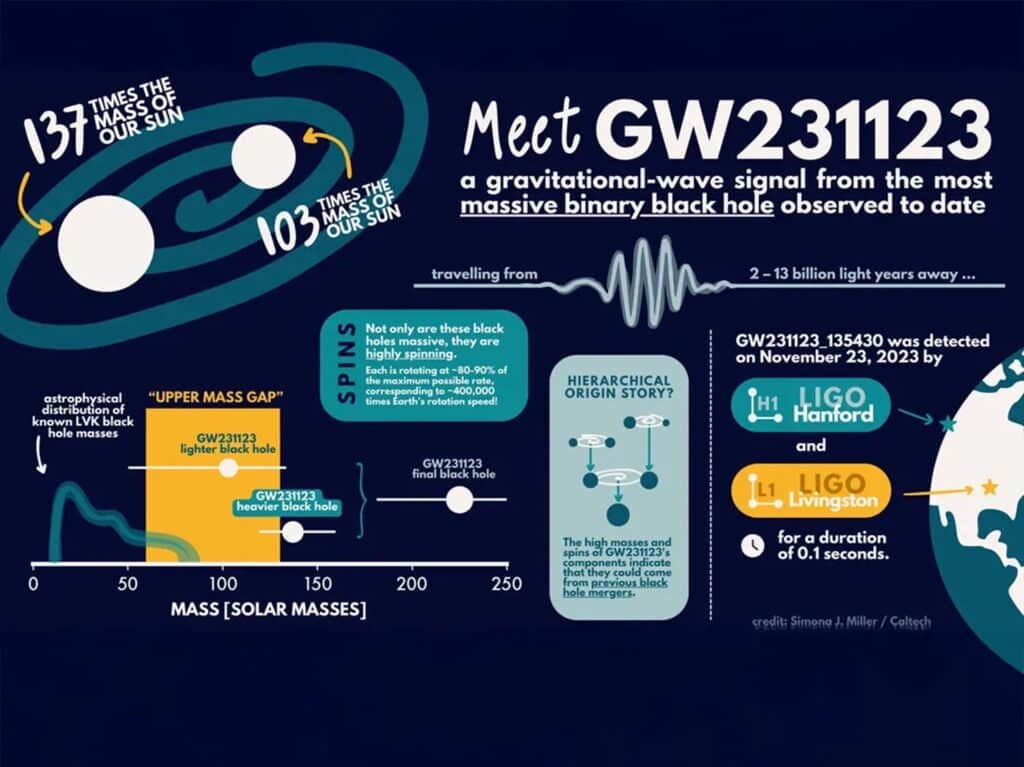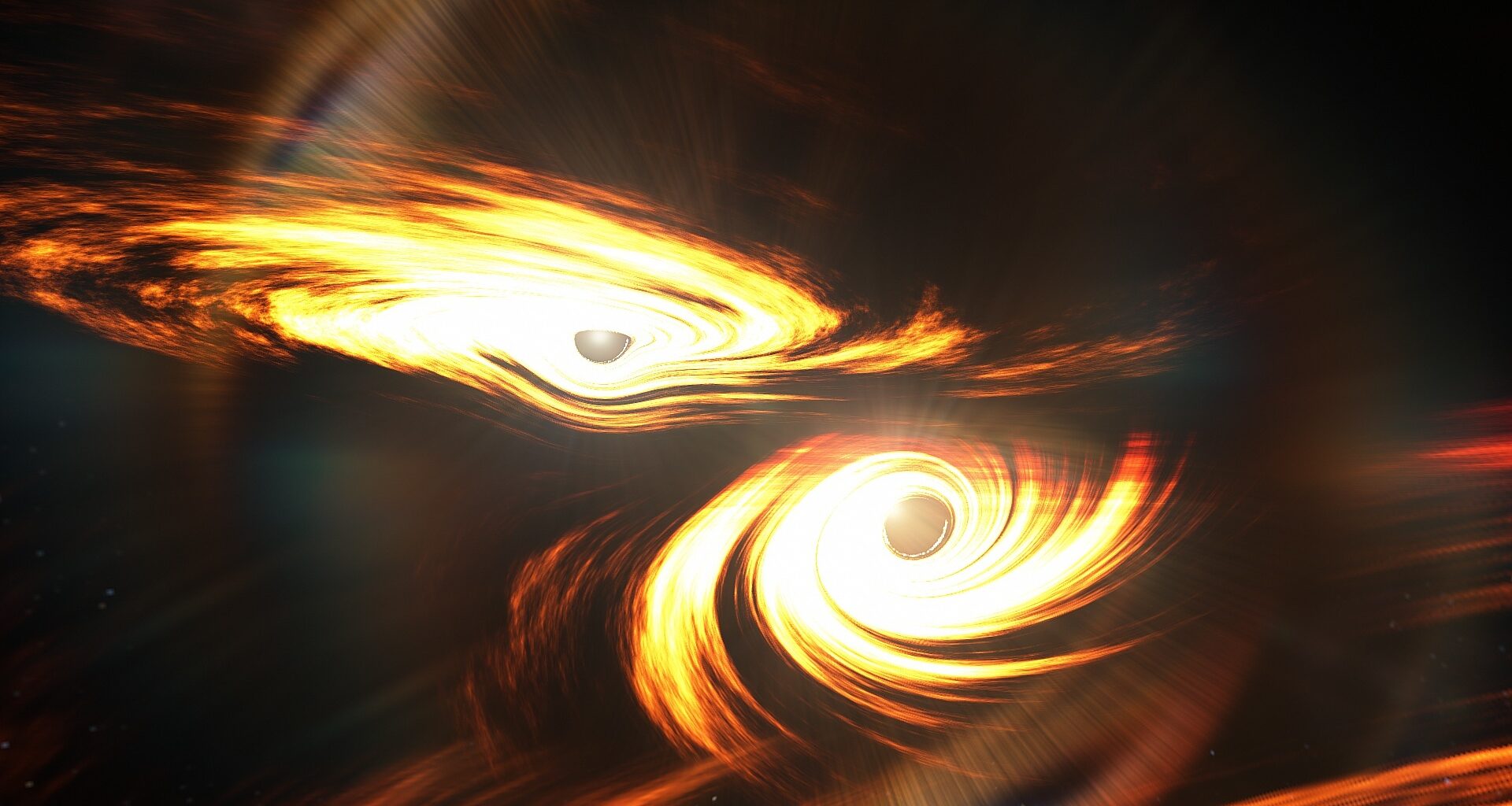In a breathtaking leap for astrophysics, the LIGO-Virgo-KAGRA (LVK) Collaboration has recorded the loudest roar ever heard across the fabric of spacetime: two colossal black holes, weighing in at approximately 100 and 140 times the mass of our Sun, have collided.
The result? A single behemoth more than 225 solar masses, now reigning as the most massive black hole merger ever detected through gravitational waves.
The signal, dubbed GW231123, arrived during LVK’s fourth observing run (O4), captured by the National Science Foundation’s LIGO observatories in Hanford and Livingston. What made this event extraordinary wasn’t just size; it was spin.
These black holes were whirling at speeds nearly brushing the limits of Einstein’s theory of general relativity, forcing researchers to stretch existing models to interpret the signal.
Breathtaking images of gamma-ray flare from supermassive black hole M87
“Black holes this massive are forbidden by standard stellar evolution models,” says Professor Mark Hannam from Cardiff University. “One explanation is that they were born from past black hole mergers, a cosmic case of recursion.“
Until now, the heavyweight champion was GW190521, with a mass of only 140 solar masses. GW231123 smashes that record, bringing fresh mystery and challenge to astrophysical theory.

As Dr. Charlie Hoy from the University of Portsmouth points out, “It’s an excellent case study for pushing forward the development of our theoretical tools.“
The discovery highlights the ever-evolving frontier of gravitational-wave astronomy. Detecting such a massive and dynamic system demands incredible sensitivity, and LIGO, Virgo, and KAGRA are operating at the edge of today’s technological capabilities.
“This event stretches our data analysis to the max,” says Caltech researcher Dr. Sophie Bini. “It shows how much more the universe still has to teach us.“
As research continues, scientists aren’t ruling out exotic possibilities beyond typical merger scenarios. The full implications of GW231123 will be presented at the upcoming GR-Amaldi meeting in Glasgow this July.
For now, the universe has whispered another secret through the tremble of space itself, and humanity has never been more prepared to listen.

